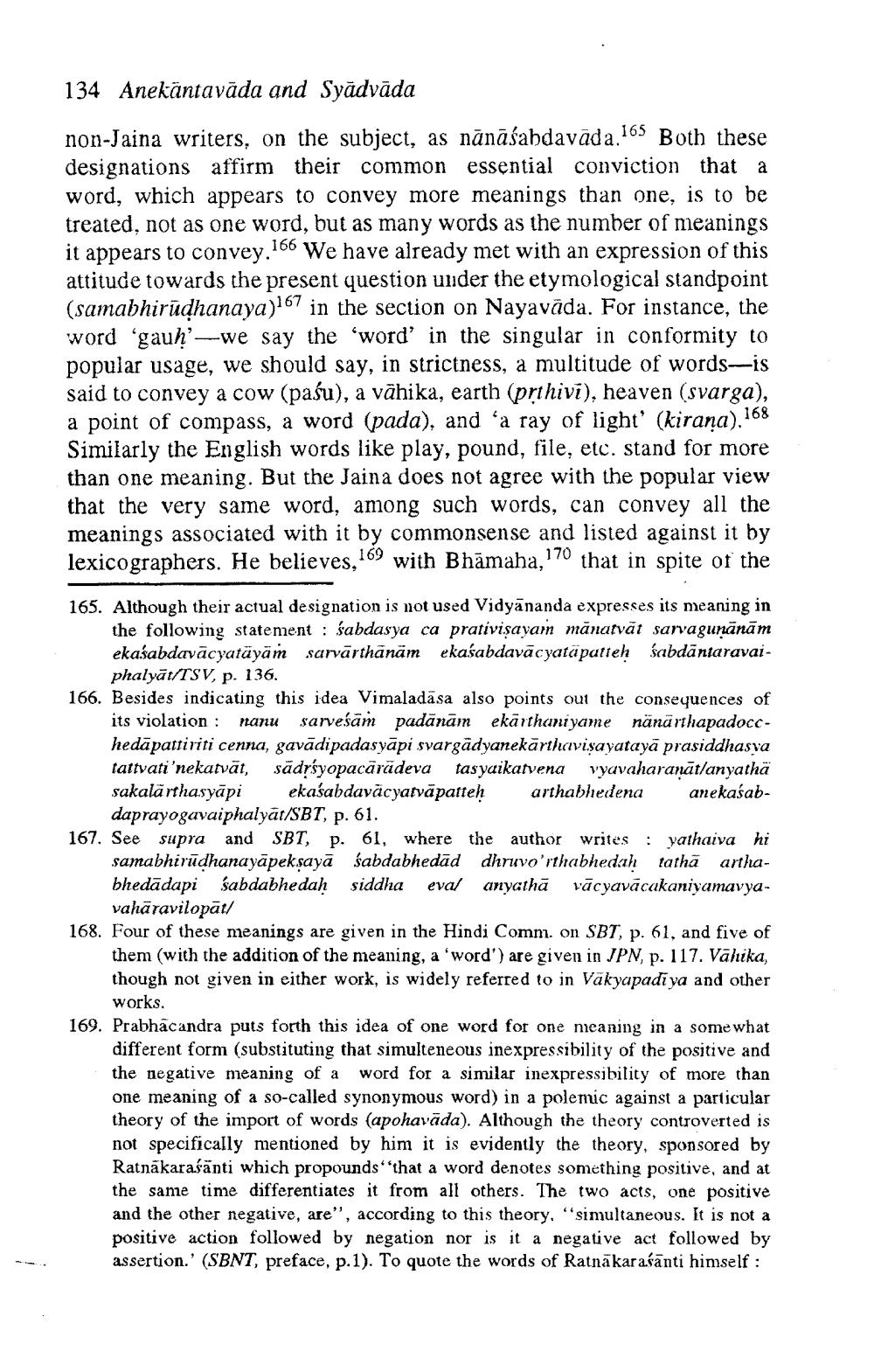________________
134 Anekantavāda and Syādvāda
non-Jaina writers, on the subject, as nānāśabdavāda. 165 Both these designations affirm their common essential conviction that a word, which appears to convey more meanings than one, is to be treated, not as one word, but as many words as the number of meanings it appears to convey.166 We have already met with an expression of this attitude towards the present question under the etymological standpoint (samabhirūdhanaya)167 in the section on Nayavāda. For instance, the word 'gauh-we say the 'word' in the singular in conformity to popular usage, we should say, in strictness, a multitude of words-is said to convey a cow (paśu), a vähika, earth (prihivi), heaven (svarga), a point of compass, a word (pada), and “a ray of light' (kirana).168 Similarly the English words like play, pound, file, etc. stand for more than one meaning. But the Jaina does not agree with the popular view that the very same word, among such words, can convey all the meanings associated with it by commonsense and listed against it by lexicographers. He believes, 169 with Bhāmaha, 170 that in spite of the
165. Although their actual designation is not used Vidyānanda expresses its meaning in
the following statement : sabdasya ca prativișayam mănatvāt sarvaguņānām ekasabdavācyatāyām sarvārthānām ekaśabdavācyatäpatteh sabdāntaravai
phalyāt TSV, p. 136. 166. Besides indicating this idea Vimaladāsa also points out the consequences of
its violation : nanu sarveśam padānām ekārthaniyame nänärthapadocchedāpattiriti cenna, gavādipadasyāpi svargädyanekārthavișayatayā prasiddhasva tattvati'nekatvātsādrśyopacārādeva tasyaikatvena vyavaharanāt/anyatha sakalărthasyāpi ekaśabdavācyatvāpatteh a rthabhedena anekaśab
daprayogavaiphalyāt/SBT, p. 61. 167. See supra and SBT, p. 61, where the author writes: yathaiva hi
samabhirūdhanayāpeksayā sabdabhedād dhruvo'rthabhedah tathā arthabhedādapi sabdabhedah siddha eval anyathā vācyavācakaniyamavya
vahāravilopāt/ 168. Four of these meanings are given in the Hindi Comn. on SBT, p. 61, and five of
them (with the addition of the meaning, a 'word') are given in JPN, p. 117. Valika, though not given in either work, is widely referred to in Vakyapadi ya and other
works. 169. Prabhacandra puts forth this idea of one word for one meaning in a somewhat
different form (substituting that simulteneous inexpressibility of the positive and the negative meaning of a word for a similar inexpressibility of more than one meaning of a so-called synonymous word) in a polemic against a particular theory of the import of words (apohavāda). Although the theory controverted is not specifically mentioned by him it is evidently the theory, sponsored by Ratnākaraśänti which propounds that a word denotes something positive, and at the same time differentiates it from all others. The two acts, one positive and the other negative, are", according to this theory, "simultaneous. It is not a positive action followed by negation nor is it a negative act followed by assertion.' (SBNT, preface, p.1). To quote the words of Ratnākaraśānti himself :




